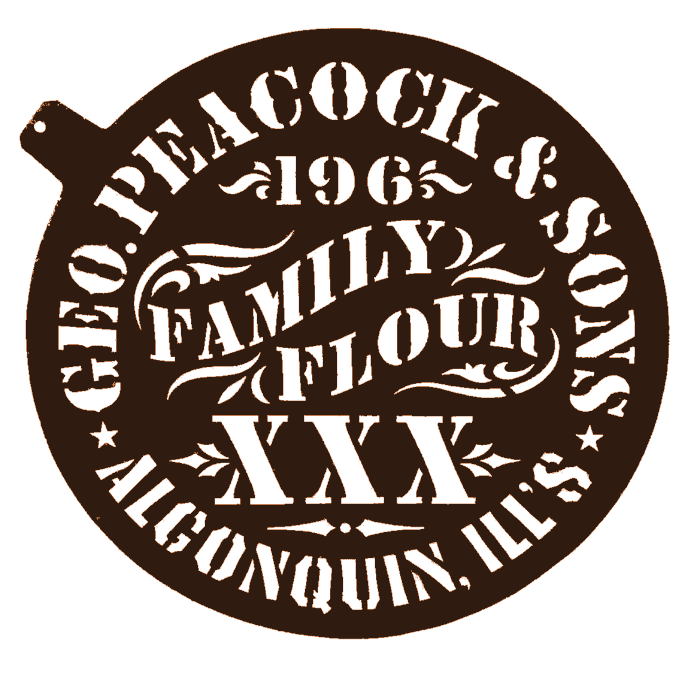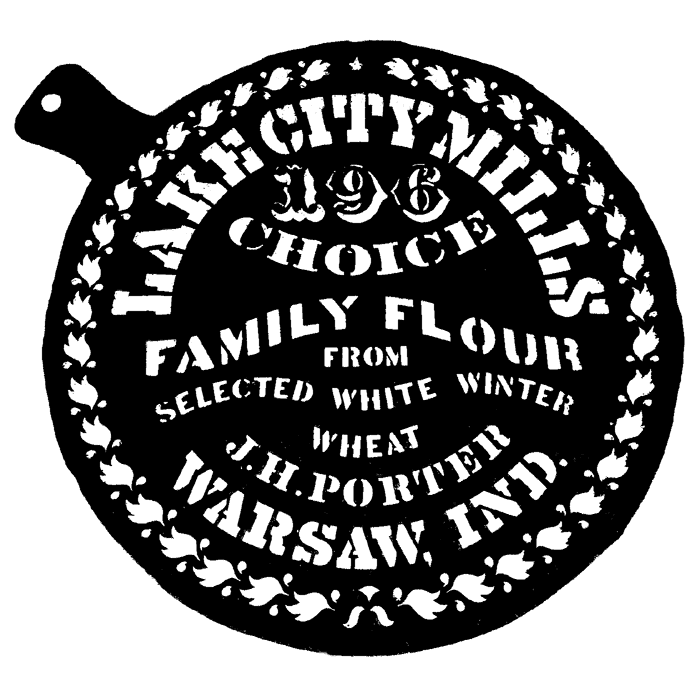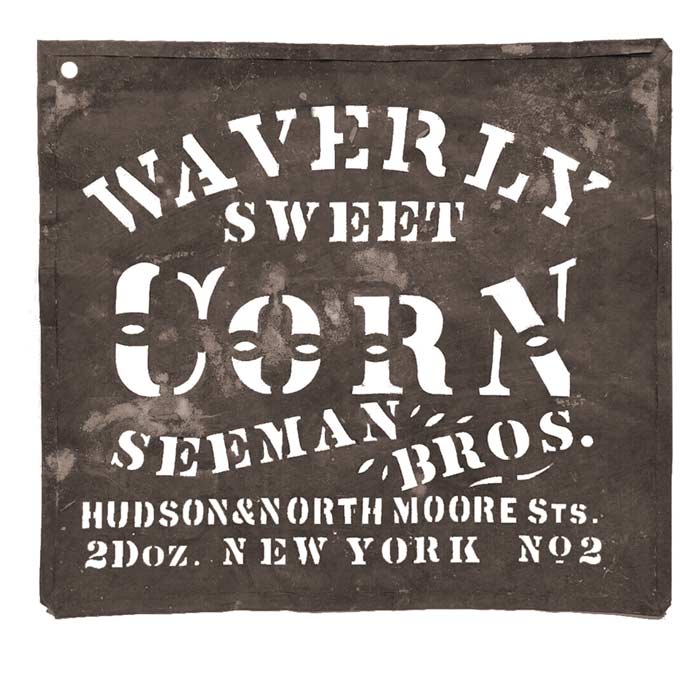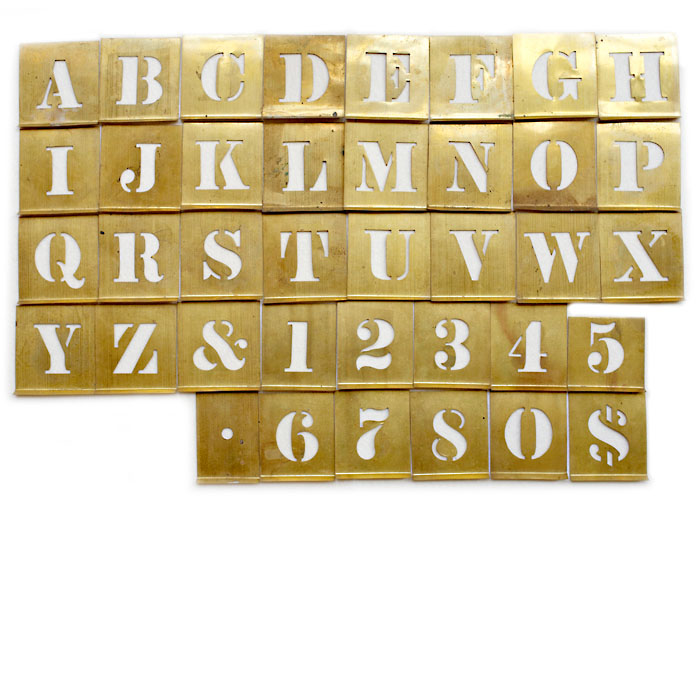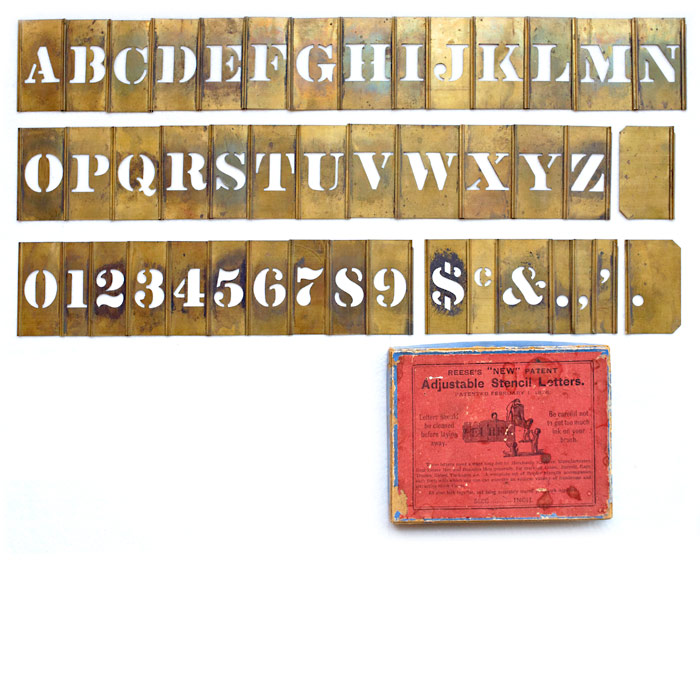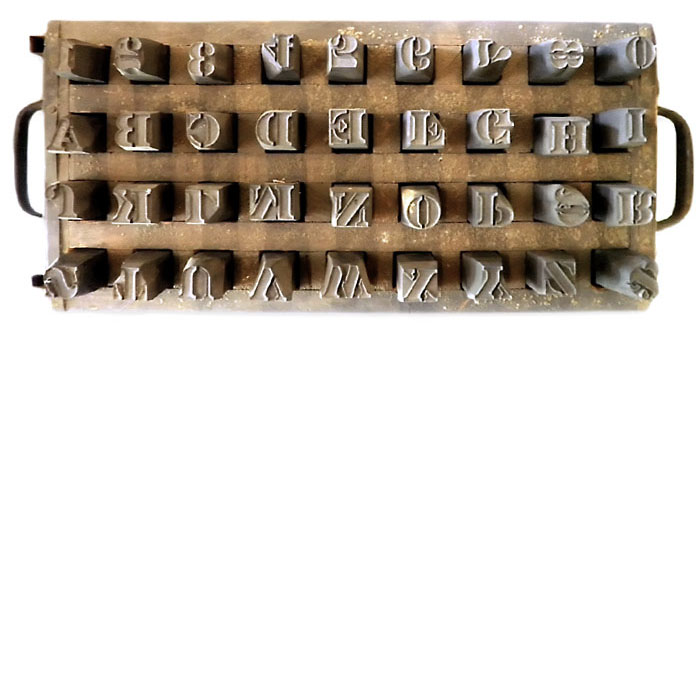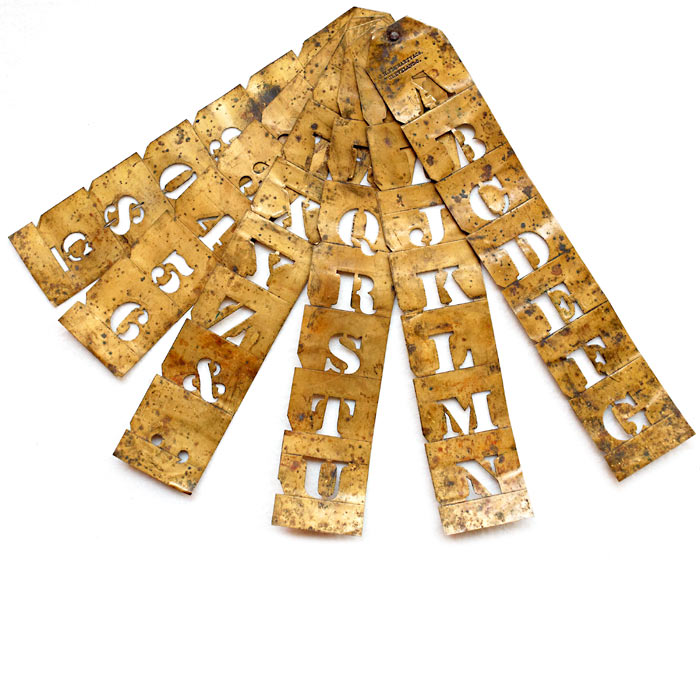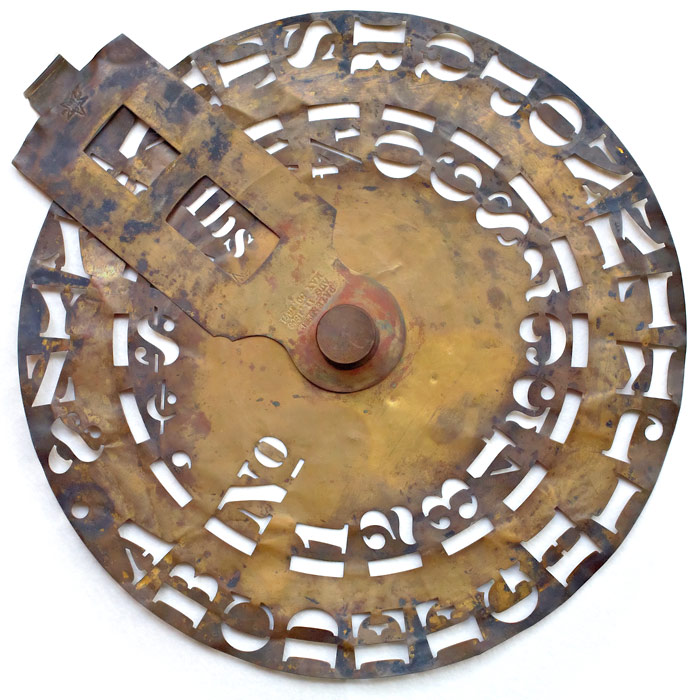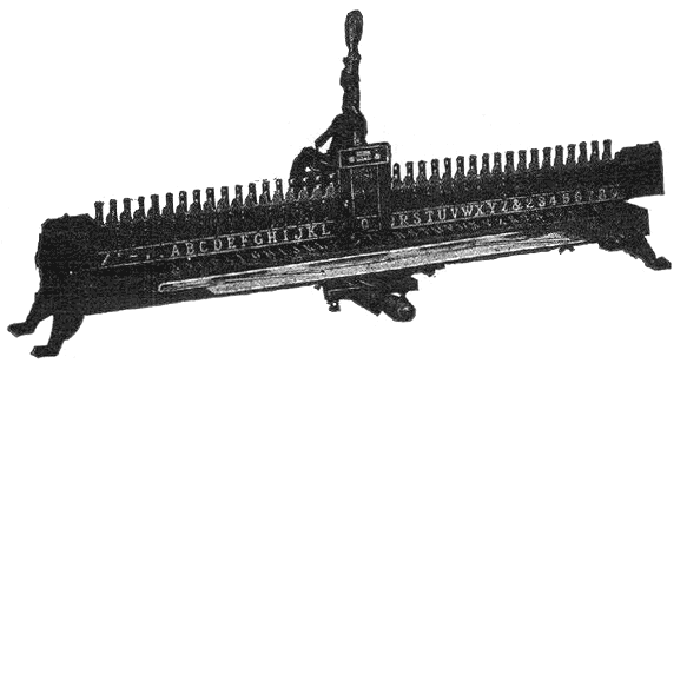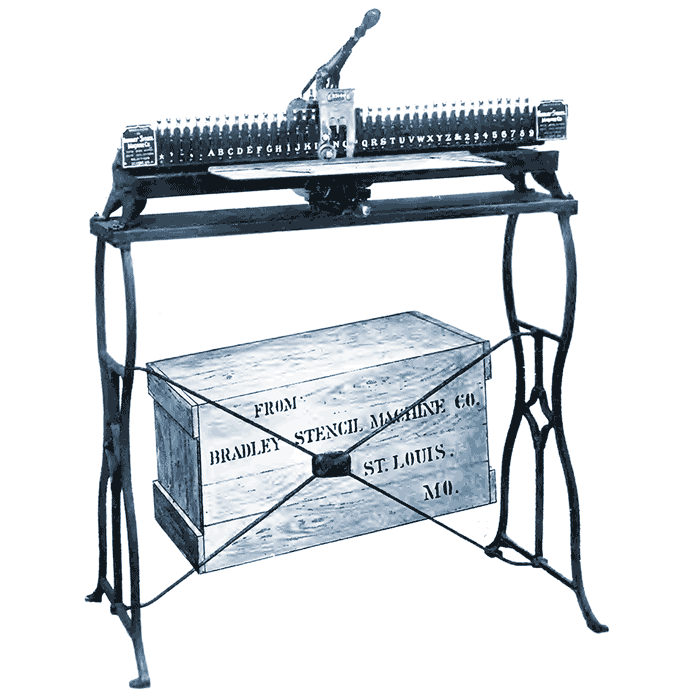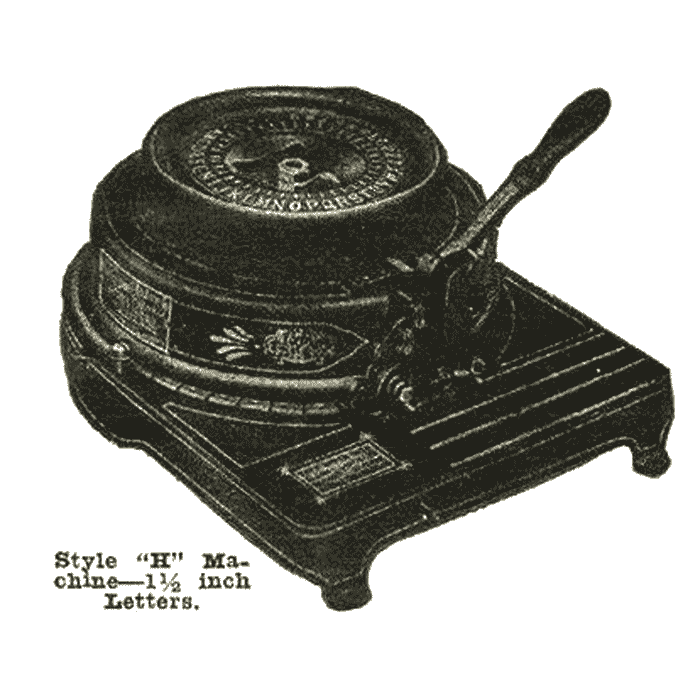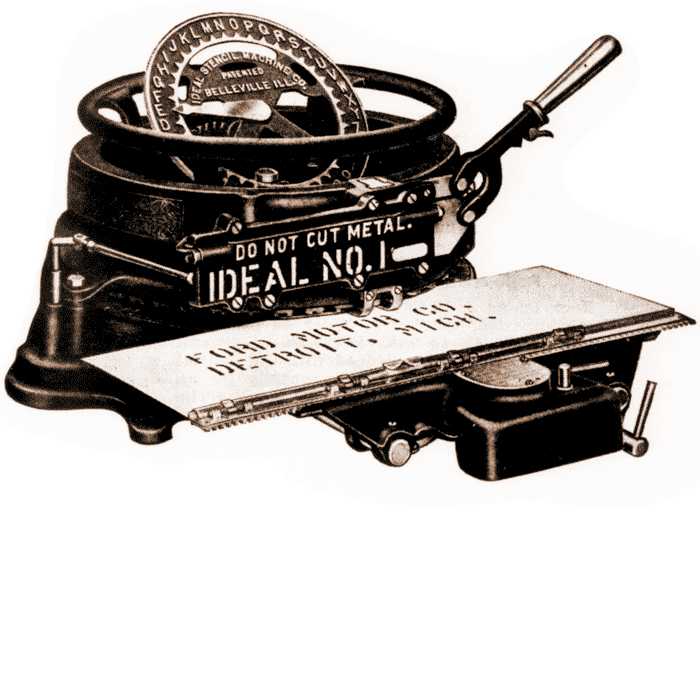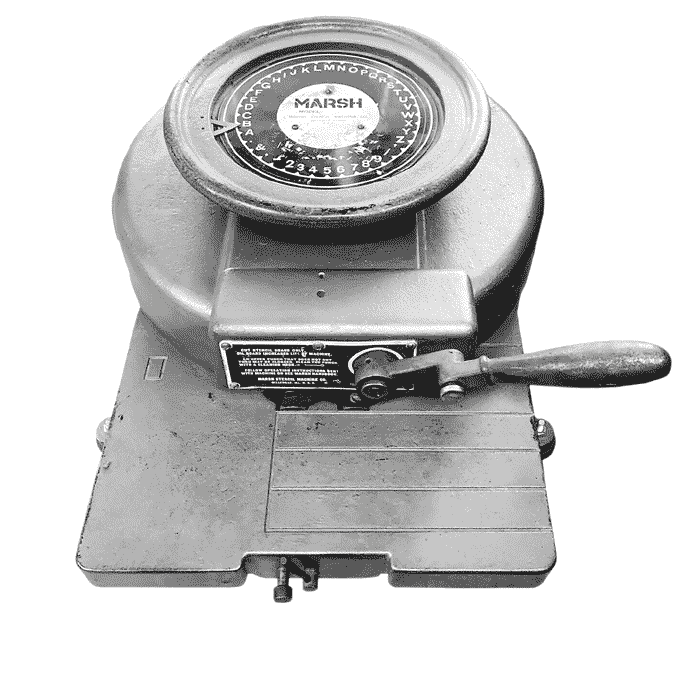Vtg Stencil Tools for Marking
A Short History of Antique and Vintage Stencil Tools for Marking
Distinction - Stencils in general vs Stencil tools for marking
Since when have there been stencil tools for letters?
This question is not easy to answer.
According to Prof. Eric Kindel, who does a lot of research in this field, these tools have been in existence the late 1700s.
For Europe, these tools are indirectly verifiable, in the form of not quite painted over letters in books of the time.
Leaving the typical «bridges» - interruptions in the letter form - unpainted was considered unattractive.
Letterpress printing was already used, but very special large texts and letters were often applied to the sheet after the actual printing.
Stencils may also have been used for characters if we look to Asia, such as China.
Probably even earlier than Europe.
But we are not focusing on stencils for books, letters, and art posters that printers and artists made in small quantities or as one-offs, but rather stencils and stenciling tools that were mass-produced and sold so that anyone could use them to quickly label things in large quantities.
With the increase in travel and transportation of goods, it became necessary to label cargo or luggage with name and address.
Even goods that were in trade locally, nationally, and especially internationally had to be identifiable by origin.
It was a matter of correctly allocating the goods in order to be able to deliver or return them.
In many countries, sooner or later, there was a requirement for manufacturer identification.
This later evolved into advertising and trademark law.
Tools for legible and easy-to-apply labeling were needed.
Custom Stencil Tools
Custom, stencils made of durable brass or oil board were often used for the marking of manufactured goods.
Think of the manufacturer's inscription on linen sacks for grain and flour, wooden crates for fruit, vegetables, bottles, or barrels for beer, wine or oil.
At that time, a craft of metalworking developed, which invented and manufactured all sorts of useful things for marking and inscribing.
These metal works produced engravings, seals, stamps, metal plaques, signs, tags and tokens, and much more, as well as stencil tools.
The oldest of these stencil tools in Europe are probably from France and date from about 1830.
The firm of Mr. Chevalier, of Paris, which was later taken over by the Thévenon brothers, and became T & C. Paris, had been in existence since 1824 and made many of these things.
However, because the custom stencil tools were made for only one recurring use case, individual letters could be used for multiple use cases.
They were made as individual stencil tools and bundled into alphabet and number sets.
These stencil kits could be made in stock without an order and could be sold anonymously to anyone on demand.
Custom stencils were more time consuming and always required a client.
Stencil Plates,
Steel Punches,
Stencil Fans,
Revolving Stencil Disc
The single letter stencils produced in stock are available in various sizes, mostly for upper case alphabets and numerals.
More rarely, these stencils are also available for lower case alphabets.
They are mostly made of brass, zinc or aluminum.
Stencils and stencil tools were also produced in large numbers in the USA beginning in the 1850s.
They use a bold, Clarendon based design, simply called a Roman or a Sans Serif typeface called Gothic.
Particularly popular were custom made stencils for all manufacturers, especially in the agricultural industry, for marking linen sacks, boxes, and barrels.
These stencil tools were cut from brass or cardboard with steel punches that reproduced the shape of the letters or numbers and had a sharp edge.
Various sizes of these steel punches were available.
Individual stencil plates, each with a letter or number, could also be made with these steel punches.
Or you can make stencil strips that have several letters in alphabetical order.
These strips were often punched at the end and combined with other strips to form a complete set of alphabet and numbers.
The result was a handy stencil fan tool that made it impossible to lose a single letter or number.
One of the major companies in this industry in the United States was Jas. H. Matthews & Co., based in Pittsburgh, Pennsylvania.
Founded in 1850, the company specialized in manufacturing and distributing a wide range of metal marking tools.
In 1868, Eugene L. Tarbox patented a round sheet of brass that contained all the letters of an alphabet and numbers in a circular order.
This revolving stencil tool was just one of many inventions at the time, but a very popular one, to develop a method of easily combining individual stencil letters one after the other.
In 1876, Samuel W. Reese developed the abjustable or interlocking stencil plates, which are still the most useful and inexpensive system for single stencils.
Today, they are sold in DIY and metal stores under, for example, the Hansons brand.
But even the U.S. military still uses it today as a small, quick marking kit that fits anywhere.
Of course, the design of the letters has changed in later stencils.
From the 1940s to the present, Grotesque or Gothic (Sans Serif) type designs have been preferred.
Stencil Machines
However, none of these tools were fast enough to do a lot of individual labeling quickly.
In St. Louis, Missouri, a region of the United States famous for metalworking, Andrew Jackson Bradley invented the first stencil machine around 1890 (US Pat. 494,546).
A custom stencil could be punched in oil board (stencil board) in record time with this machine.
In 1893, the patent was granted and the company was founded.
In the first year of the company's history, Bradley sold only 9 of these machines.
Nevertheless, it was a success story that extended far beyond the United States.
Other patents for better stencil machines and improvements were quickly filed.
A total of three other stencil machine companies were established in the region by 1922.
Besides the Bradley Stencil Machine Company, the Diagraph Stencil Machine Corporation, St. Louis, MO. in 1902, the Ideal Stencil Machine Company, Belleville, IL. in 1911 and Marsh Stencil Machine Company, Belleville, IL. in 1922-24.
The stencil machines were so successful and useful that they are still manufactured and appreciated throughout the world.
It was not until manufacturers and logistics companies introduced digital marking systems and the transport system changed to standard reusable containers that their importance began to decline steadily since the 1960s.
All trademarks mentioned belong to their respective owners.

